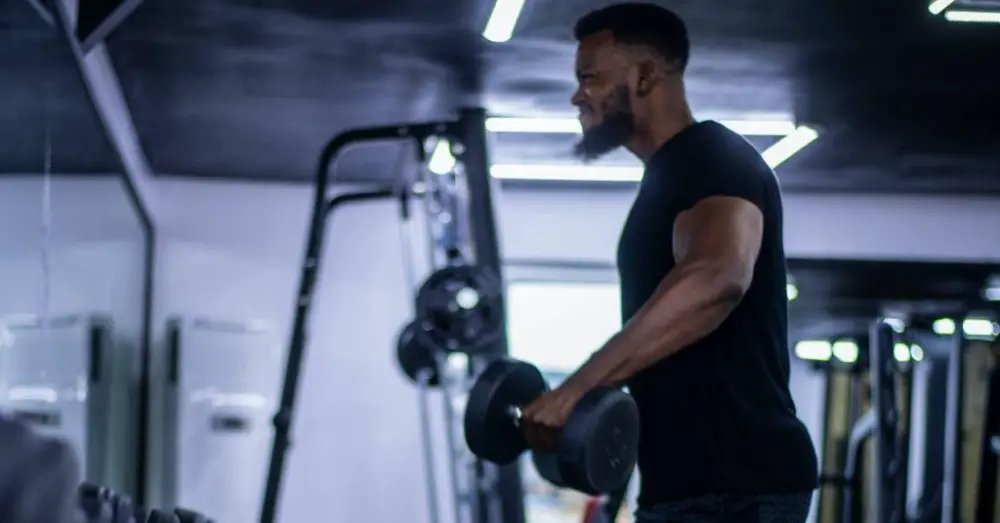Some athletes swear that squats are the best movement for developing their butt. Others may consider hip thrusts to be the real key to gaining glutes. But the truth is that each exercise has its critics and lateral flight is no exception.
Although lateral raises can help build shoulder strength, they may not be the exercise you need for healthy, stable shoulders. Here’s why scapular raises deserve a place in your upper body training routine and why they can take precedence over lateral raises.
Benefits of doing scapular raise for shoulders
Escaptions are more controlled
If you’ve ever done standing lateral raises, you’ve probably discovered the trick that helps lift the dumbbells. In other words, you dip your chest and use the momentum of the weights to lift them to shoulder height.
While this trick will help you lift weights, it doesn’t do your shoulders any favors. Using momentum during lateral raises ultimately renders the exercise ineffective. Your strength improves the longer your muscles are under tension. So bouncing the dumbbells with each rep defeats the purpose of the exercise.
On the other hand, scapular raises are an intentionally controlled movement. The goal is to move your shoulders at a slower pace using lighter weights. Thus, while lateral movement elevations are hard-construction, the corrective s escapciones are helping to stimulate both the strength and stability of the shoulder joint.
Improve shoulder stability
Your shoulder is one of the most mobile joints in the body. Therefore, shoulder instability is a common problem and often stems from weakness in the shoulder blades (the scapula), as these muscles are supposed to provide a stable platform for the shoulder.
There are a number of factors that can affect your scapular stability, including daily activities or any previous injury to the shoulder joint. And sometimes the cause of instability is your posture. That is why the scapular raise is a crucial exercise to include in your exercise routine to improve shoulder health.
Escaptions target the rear muscles in the upper back that help not only maintain a strong posture, but also target proper scapula alignment and help stabilize the kneecap of the shoulder joint. They also help strengthen the rotator cuff in the eccentric part of the exercise, so it is important to control it.

Help prevent pain and injury
Unstable shoulders are not only ineffective during everyday movements, but they are also a leading cause of shoulder pain or injury.
By the nature of your build, your shoulders are in a risky position. The shoulder joint is shaped like a kneecap, allowing for a fairly wide range of motion. But without proper stability in your shoulder, the ball of your upper arm can slip out of the socket, resulting in a partial shoulder dislocation.
The main way to help treat shoulder pain or injury is by improving joint strength through physical therapy. But instead of going through the grueling process after the fact, you can practice corrective exercises (like these lifts) as a preventative measure.
Should you stop doing lateral raises?
While the scapular raise deserves a place in your upper-body exercise routine, it shouldn’t replace lateral raises, either. The intention behind a side raise and shoulder climb is different, so you can’t evenly swap one for the other.
When it comes to joint health, we believe that scapular raises are most beneficial for developing a strong shoulder girdle. But both have their time and place; when I think of these two exercises, I think of two different approaches. The side raise would be more of a cosmetic exercise that would add more of a ‘cap’ to the head of the shoulder.
Doing the scapular raises and lateral flight correctly will help ensure that you get the most benefit from each movement.
Dumbbell scapular raise
- Stand with a dumbbell in each hand, arms at your sides and palms facing inward.
- Squeeze your core and lift the dumbbells in front of your body at an angle of about 45 degrees.
- Raise the weights until they are slightly above shoulder height.
- Lower the weights with control.
Before you begin, think about pulling your shoulder blades back and down, with the core reinforced. Select a pair of dumbbells that are challenging but controllable for all reps of each set. The focus of the movement is the movement, not the amount of weight you are lifting.
Dumbbell Lateral Raise
- Stand with a dumbbell in each hand and your arms at your sides. Keep your back flat and your knees slightly bent.
- Keeping your core strong, lift the weights out to the sides until they reach shoulder height.
- Lower the weights slowly back to the starting position.
For lateral raises, choose a lighter pair of dumbbells so you don’t have to rely on momentum when completing all reps.
